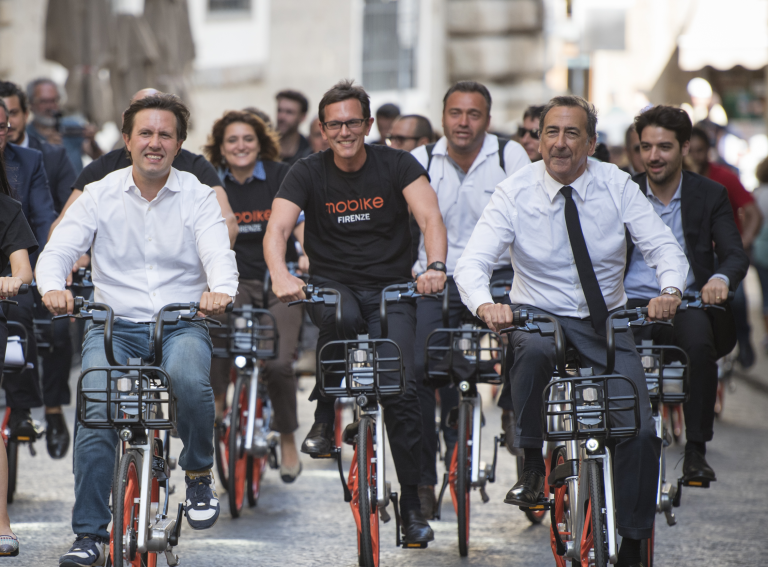The micromobility industry has seen an explosion of new technology in recent years.
From geofencing, ID verification and computer vision technology, to connected ‘car telemetry’ that can create overall rider safety scores – if there’s one thing this tech has demonstrated it’s that their application can be used to level the playing field between micromobility vehicles and cars.
“The potential of this technology should not be questioned,” says Urban Sharing’s Chief Revenue Officer Tom Nutley. “But what I am questioning is whether cities should mandate it from shared micromobility operators.”
Costing the operator and end-user
One concern that Tom has with cities demanding advanced technology from operators is the impact this can have on unit economics and the rider experience.
Nutley believes that success of a shared micromobility system comes down to three things: scale, density, and visibility, and these shouldn’t ever be sacrificed.
“Technology like advanced sensors, collision avoidance systems, and other AI can cost as much as the asset itself,” says Tom.
These requirements, Nutley argues, do not just cost the operator but the rider too, especially if there’s a lack of venture capital funding. “Someone has to pay for the costs of the tech and right now it’s not going to be anyone else but the user.”
In a ripple effect, he has seen this lead operators to deploying their vehicles to where they know they’ll get used – town centres and the Zone 1s of cities, instead of outer zones where people are limited with transport options and therefore need to drive.
“The actual outcome the industry is trying to achieve starts to get muddled.”
Speaking with Christy Pearson, Co-Chair of Micro-Mobility for Europe and Voi’s Director of Central Policy, she said: “Rather than mandating specific technologies, cities should focus on identifying the core problems and allowing operators the flexibility to innovate and solve them in the best way.”
Tom Nutley agrees but in some cases thinks cutting edge technology has actually gone too far. He says mandatory helmets, ID verification, or needing to insert card details can actually put riders off from using the system. “This can create blockers and be overkill,” he says.
Christopher Kemp, Chief Operating Officer of Irish mobility company Zeus Scooters, however highlights the security that ID verification brings to the market after the spouts of fraud and unsafe riding seen in earlier years.
“But there is a substantial cost to the operator to implement this,” agrees Christopher. “Cities should definitely consider the costs to operators when implementing their fees and perhaps consideration should be made to share these costs moving forward.”
A ‘Big Brother Enforcement’
Tom argues that often this “invaluable advanced technology” is being used by cities for the wrong reasons: to penalise the operator and quantify riders as ‘bad’ riders.
“The problem is not the tech. It’s the way the tech is being used.”
Take computer vision, for example, which can detect riders who ride on sidewalks. Operators can group GPS data of shared systems to then quantify where improved infrastructure is needed in the city.
“But cities aren’t using it for this. They want to know who is riding on sidewalks and then what comes next are fines and bans.
“Cities want a big-brother enforcement, and an expensive one at that, rather than using the data to achieve a positive outcome.”
“Why do people ride on sidewalks? Because there isn’t the necessary micromobility infrastructure in that area.” Tom says that rather than witnessing 90% of riders ride on a certain sidewalk and condense it to a certain ‘type’ of person, it’s a result of a lack of infrastructure.
“It’s not indiscriminate usage of the vehicle, it’s the fact that the city doesn’t have the infrastructure in place to allow the user to get to where they need to go.”
Intermobility Co-founder Lukas Neckermann echoes the need for cities to turn their focus to infrastructure. “It’s fair for cities to set certain requirements for the safe operation of micromobility – whether shared or owned. The most significant safety measure, however, is something cities can enact themselves: infrastructure.
“Protected lanes, ample dedicated parking, and policies that prioritise bikes and scooters would go a long way toward a fair balance of carrot and stick.”
It’s important to remember why cities want micromobility in the first place, Tom says. “Because they want less people in cars.
“We want people to move to micromobility but right now cities are mandating this advanced technology which is costing operators and impacting their bottom line. Cities should either remove the mandate or share the costs. Simple.”





